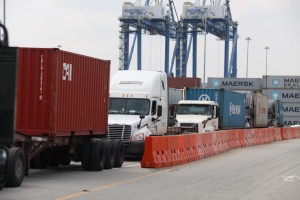
Beginning with a 2009 GlaxoSmithKline Fellowship at the Institute for Emerging Issues on Transportation Policy and a Lead Scholar role in the development of a North Carolina Humanities Council Summer Institute on Railroads, Rachel Willis returned to a research agenda on transportation. Stemming from prior research on the future of manufacturing jobs, the focus was initially on multi- modal transportation corridors to ports to enable manufacturers to be globally competitive. In an article for the NCHC Conversations, she wrote about the critical importance of rail corridors to ports for NC. The underlying themes for multi-modal sustainable development of freight transportation corridors for new research are explained in NC Conversations Laying Down Tracks – Good Roads to Good Modes – Winter Spring 2012 Willis . A summary of the Teacher’s Institute by North Carolina School of Science and Math Teacher can be found 2012 Laying Down Tracks Teachers Institute Review Summer Fall 2012
Spring 2012 Willis was the London Honors Faculty Director for UNC and both offered a course on Global Access to Work and completed numerous field studies to transportation sites, museums, libraries and facilities. As a result, she focused her work on the role of rail and water transport in global trade and begin an research investigation that led to a 2013 Chapman Family Teaching Award . It included a $10, 000 research fund for travel to related field sites and a Spring 2014 IAH Fellowship and was initially focused on the investigation of the expansion of the Panama Canal on the ability of southeastern coast and Gulf ports to accommodate larger vessels, Her background on manufacturing firms and US transportation planning led to a focus infrastructure investments and policies to improve access to work through trade competitiveness. The project’s scope grew with a Global Research Institute Fellowship to examine water transportation for freight in the larger context of the UNC campus “Water in our World” theme. Within a short period, numerous field studies, seminars and conferences further expanded the scale and primary objective of the research project. Projected sea-level rise, significant rainfall and temperature variations, and the increasing severity of weather extremes create the need for sustainable solutions to meet the challenges of climate change with respect to transport planning for freight to and from coastal and inland ports.
It is not whether the Post-Panama Max ships will fit under the bridges to access US ports, but how we plan and pay for the necessary resilient infrastructure to use sustainable transportation modes in the future. This is essential to protecting people and their access to essential needs of clean water, food, clothing, shelter and energy.
Deeply connected to her previous work on “access to work,” this nexus research agenda and accompanying documentary photography for Water Over the Bridge continues in 2014 at the Global Research Institute.
A small gallery of some of the documentary photographs to be used in the Water Over the Bridge manuscript are included in the Gallery.
